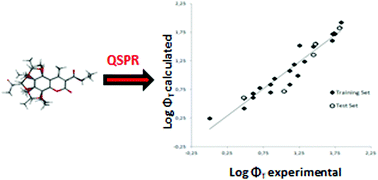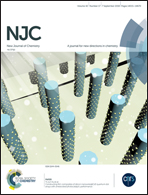Triplet state generation by furocoumarins revisited: a combined QSPR/DFT approach
Abstract
Furocoumarins (psoralens and angelicins) are often used for the photo-treatment of psoriasis, vitiligo, atopic dermatitis and other dermatological pathologies. The mechanism of furocoumarin action in vivo is as follows: furocoumarin enters the cells and intercalates between DNA base pairs. Upon exposure to UVA, furocoumarin absorbs photons, becomes chemically activated, and covalently binds to DNA base pairs, forming cross-links and cyclobutane type adducts with DNA. The triplet state formation by furocoumarins is a key process, which leads not only to covalent binding to DNA, but also to the generation of reactive oxygen species and photooxidation reactions. Our goal was to develop a quantitative structure–property relationship (QSPR) model for the fast virtual screening and prediction of the efficiency of triplet state generation by furocoumarins. We performed QSPR analysis of 26 furocoumarin compounds (including widely known 8-methoxypsoralen and 5-methoxypsoralen) for their ability to form triplet excited states. Quantum-chemical descriptors were calculated using the HF, B3LYP and PBE0 methods. The ability of furocoumarins to generate triplet states was found to be significantly correlated with the T1 triplet state energy (R2 = 0.627) and the Jhetv descriptor. The best QSPR model “structure–triplet state generation” possesses high internal stability (q2 = 0.865) and a high predicting ability for the test set (pred_R2 = 0.897). The evaluation of reactive oxygen species generation feasibility using Density Functional Theory (DFT) was also performed. We hope that the QSPR model developed in this study will be useful in the development of new synthetic psoralens and angelicins for medicinal purposes.



 Please wait while we load your content...
Please wait while we load your content...